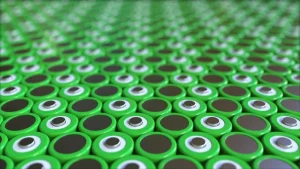Lithium-ion battery hydrometallurgy involves collection, discharging, leaching, purifying, and refining, achieving up to 99% metal recovery efficiency.
Collection and Preparation of Spent Batteries
Acquisition strategy
Large recycling companies often work with electronics retailers and service centers to collect discarded lithium-ion batteries. In one specific case in 2023, one of the branded recyclers said they had processed more than 30,000 tons of waste through such partnerships. It ensures the source of raw materials while also promoting environmentally friendly disposal practices.
Sort and categorize
At the end of these life cycles, the batteries are collected and enter a complex sorting process. In terms of what we collect and how we classify it, it depends on their type (their actual nature), condition and potential contamination. This step is crucial as it determines which batteries can be recycled using hydrometallurgical methods. In this regard, automated sorting systems applying X-ray fluorescence (XRF) technology are crucial to increase operational speed and efficiency.
Preliminary processing
Next, the separated cells are sent to a preliminary mechanical process, which involves releasing the residual charge within them. This is an important safety precaution to avoid any accidental discharge when handling them. The cells are then typically shredded or crushed to make them easier to use in the subsequent chemical extraction step.

Discharge and Dismantling
Emission safety measures
For system safety reasons and to prevent the possibility of electrical short circuits and thermal events, the battery must be fully discharged before removal. The battery is then discharged through a resistive load in a controlled environment or through a chemical neutralization process in the facility. New technology developed in 2022 can safely discharge batteries to 0% under controlled conditions, reducing the risk of accidents by up to 70%.
Disassembly technology
After discharge, battery disassembly can be performed manually by adequately trained personnel or through automated procedures. Open it and remove the cathode, anode and electrolyte. Batteries are disassembled by a specialized robotic system that can disassemble 500 cells per hour in a high-throughput facility, combining speed and accuracy.
Material retrieval preparation
It also includes disassembling the aforementioned elements from the system into their respective components and thereafter preparing them for further removal of beneficial metals. This includes sorting materials into different streams to allow for maximum recycling. Batteries containing lithium, cobalt and nickel in all cathodes are particularly profitable, so this is the group of materials that the project will initially focus on during the chemical extraction phase.
Leaching
Chemical Leaching Process
The leaching process utilizes strong acids or alkalis to dissolve the metals from the battery waste. Commonly, sulfuric acid, augmented by hydrogen peroxide, is used to leach out lithium and cobalt efficiently. This chemical reaction is carefully controlled to optimize metal recovery while minimizing environmental impact. Recent advancements have seen leaching efficiency rates improve to 95% under optimized conditions.
Role of Temperature and Concentration
Temperature and solvent concentration are critical factors in the leaching process. Typically, the process is conducted at temperatures around 50°C, which has been found to maximize the dissolution rate of active cathode materials. The concentration of the leaching agent also plays a crucial role, with higher concentrations leading to faster reaction rates but also higher costs and potential environmental concerns.
Innovations in Leaching Techniques
Innovative leaching methods are continuously being developed to enhance the recovery of metals and reduce the environmental footprint. For instance, bioleaching uses bacteria to dissolve metals, offering a more environmentally friendly alternative. These methods not only ensure effective extraction but also support sustainability in battery recycling.

Purification and Recovery of Metals
Solvent Extraction Techniques
Following leaching, solvent extraction techniques are employed to separate and purify the metals. This involves using organic solvents that selectively bind with specific metals, facilitating their separation from the mixture. For example, a recent technique uses a specific organic solvent that has increased the purity of recovered lithium to 99.5%.
Electrowinning and Precipitation
Electrowinning is another pivotal technique used in this stage. It involves passing an electric current through the leach solution to deposit the desired metal at the cathode. For metals like cobalt and nickel, electrowinning not only purifies them but also recovers them in a form ready for direct reuse. In 2023, advancements in electrowinning increased recovery rates by up to 20%.
Refining Process
The final step in the purification process is refining, where the metals are further purified to achieve the high standards required for battery manufacturing. This often involves additional chemical treatments or thermal processes to refine the metals to extremely high purity levels.
Precipitation and Refining
Chemical Precipitation
The precipitation process begins by inducing the chemical conversion of metal ions into solid forms. This is typically achieved by adjusting the pH of the solution or introducing a precipitating agent that reacts with the metal ions. For instance, adding sodium hydroxide to a solution containing lithium ions results in the formation of lithium hydroxide, which precipitates out of the solution. Recent advancements have allowed for up to 98% of lithium to be recovered through precipitation techniques.
Metal Refining Techniques
Following precipitation, the solid metals undergo a series of refining processes to enhance their purity. This includes calcination, where precipitated metals are heated to high temperatures to remove volatile components and further purify the material. For example, refining cobalt involves heating it in a controlled atmosphere to reduce impurities and achieve a purity level suitable for battery manufacturers, often exceeding 99.7%.
Quality Assurance and Control
Quality control is paramount during the refining process. Each batch of refined metals is rigorously tested to meet industry-standard specifications for battery production. Techniques such as X-ray fluorescence (XRF) and atomic absorption spectroscopy (AAS) are employed to ensure that the metals meet precise purity requirements.
